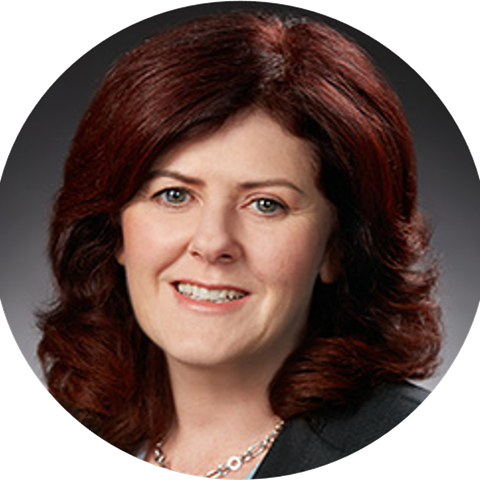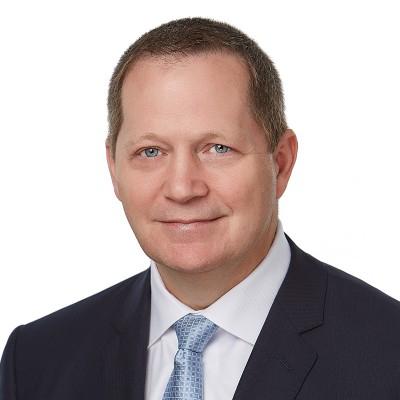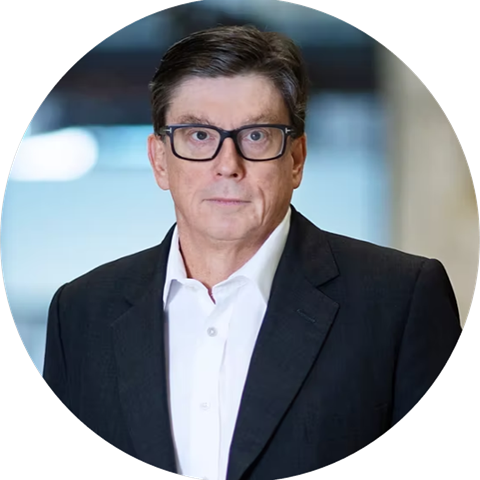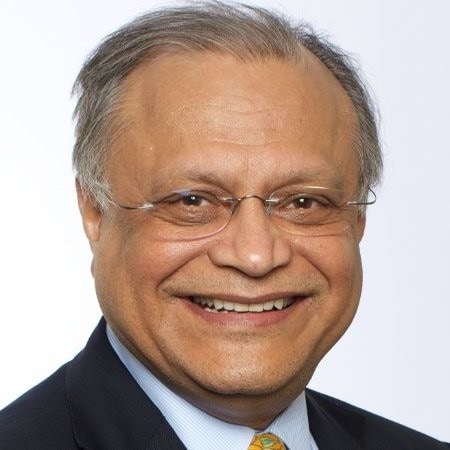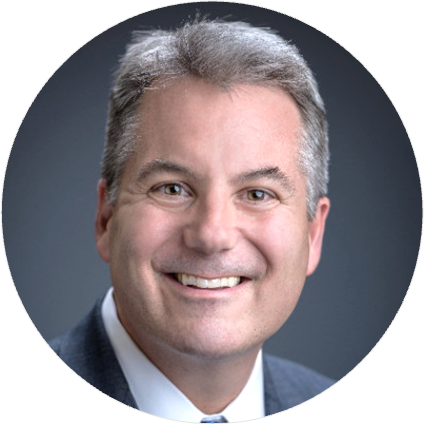A decade ago, automaker Audi AG was growing rapidly, but its financial data and IT infrastructure weren’t keeping up. “Our processes were stuck in the past,” recalls Axel Strotbek, then roughly halfway into his ten-year stint as CFO of Volkswagen’s upscale brand. Regional finance departments relied on disparate systems and data, so siloed information made it difficult to provide the real-time updates that business leaders wanted. “We had to think more holistically about the entire world of finance, not just the islands of pricing, accounting, or treasury,” says Strotbek.
His solution was an ambitious standardization and digitization program to create an IT backbone that could support the finance function as the company evolved. Audi management thus had to peer into the future and understand what the industry and the company’s products would look like and what capabilities finance would require. “We asked ourselves, ‘Where do we want to go, and how do we get there?’”
If the early years of a CFO’s tenure are about dousing any fires, scoping out the challenge, and pulling together the core team, midtenure is when the best finance leaders get bold. Much as top midtenure CEOs focus on sustaining performance momentum, midtenure CFOs must guard against organizational complacency by becoming prime movers of change.
To understand how CFOs can find that higher gear, we interviewed eight former finance leaders about their midtenure moves. As the role’s scope and the attendant pressures grow, CFO tenures have been shrinking—they now average 3.51 to 4.52 years in large companies—so we defined midtenure as two years in and after. Our broader goal is to chart how CFOs can succeed at every stage of the role’s life cycle: becoming a high-potential candidate, making a strong start, raising the finance function’s performance in the middle years, and transitioning to the CEO role. The interviews, combined with our research and experience serving CFOs, point to four midtenure priorities: revitalizing the finance function, collaboratively finding a new strategic aspiration, reevaluating and developing the finance team, and expanding the focus beyond finance.
Reinvent the finance function—and yourself
Strotbek’s challenge at Audi reflects a common pattern: with the organization chasing growth, functional processes lag behind. It’s not surprising, then, that many midtenure CFOs seek to reimagine how the function operates.
“Particularly in the early days, we typically focused on investments in growth before infrastructure,” says Karen McLoughlin, former CFO of Cognizant Technology Solutions. “It was intentional, but it meant that infrastructure sometimes lagged, until you would start to feel pain points.” Her predecessor had directly managed some administrative functions, such as real estate and procurement, but as the company grew that wasn’t sustainable. Accordingly, during a finance revamp she undertook, she delegated oversight of some nonfinance functions so her team could focus on areas of strategic importance.
To find the optimal structure and ways of working, several former CFOs we interviewed looked outside for inspiration, visiting other companies to see how they approached cybersecurity, performance management, or M&A. They also tried to establish objectively how their organizations compared with peers. When Arun Nayar, former executive vice president and CFO of Tyco International, set the aspiration of making his finance team the world’s best, for example, his first step was to benchmark the function’s practices and capabilities: “Were we number two or number 35?”
Any significant overhaul is bound to encounter opposition that the CFO needs to deftly, but assertively, navigate. As part of Nayar’s transformation of the function, he wanted to move processing work offshore, but this turned out to contravene Tyco’s contractual commitments with the US government—a major client. After working with the outsourcing provider to redact the data so that it met the government’s privacy constraints, the respective teams of both Nayar and the chief information officer wanted to move forward, but the CIO himself was unwilling to take the risk. Nayar believed in the move strongly enough to take the issue to the CEO, who sided with him. (The CIO’s fears proved unfounded and the two remain friends.)
As CFOs strive to reimagine their function, they should also reinvent themselves. External input can be valuable for polishing skills, reexamining beliefs, or reaching big decisions. Chris Kreidler, who served as CFO at both Sysco Corporation and C&S Wholesale Grocers, developed networks of key shareholders and investment bankers he could use as sounding boards. He recommends asking yourself, “Who can I go to who would be willing to honestly tell me, ‘I think you guys are screwing up’ or ‘I think you’re missing a trick here’? The external world will come calling with its agenda if you wait too long, but if you take the initiative, you will establish communication lines so you can learn from and influence those people.”
Warwick Bray, the former CFO of Telstra, found ideas and support through an informal network of Australian CFOs. “Each time I met with one of my CFO peers, we discussed insights, resource allocation, balance sheet optimization, and performance monitoring,” he recalls. “It was most useful.” A banking CFO, for example, advised Bray to always consider the momentum case—how the business would develop without new interventions—when he assessed forecasts from various parts of the organization.
Richard Mayfield, who served in several divisional CFO roles at Walmart before becoming the CEO of its largest regional unit, used reverse-mentoring to help him improve as a leader. He suggests picking two or three people you trust and telling them, “I need you to keep an eye on me because I’m trying to work on this, and I need you to drag me aside and say, ‘That didn’t work and here is why.’” He adds, “The most valuable feedback is in-the-moment feedback because it’s the most real.”
Collaborate with the CEO on a new strategic aspiration
Success can engender complacency in organizations. The CFO has the power to replace that complacency with a new ambition. An outside-in perspective—through the lens of an activist investor, for example—can serve as a form of independent due diligence on the company and help the leadership team see its blind spots. “You have to keep reexamining what the enterprise needs,” says Nayar. “If three years ago you started the journey in a certain direction, is that direction still the right one? Has the environment changed? Has the competition or technology changed? Has the government changed?” The idea, he adds, is to think about what it would take to attract a new investor. “If you’ve taken the stock price from $11 to $50, how do you take a $50 investment today and make it $100?”
A focus on growth doesn’t come naturally to most finance people, however. “CFOs tend to be good on the cost side but less good on growth, which is harder and more complex,” says Mayfield. “But you’re reading data all the time on the whole business, and that translates into an understanding of how, where, and why value gets created. The best CFOs are strong on cost and efficiency, and even better on customers, markets, and positioning the business for long-term growth.”
The CFO should also dispel the common perception of finance as an obstacle to investment. Marjorie Lao, the former CFO of LEGO Group and Tandberg (now part of Cisco), advised her team that “our job in a meeting is not to necessarily be the person who says no but to say, ‘Yes, as long as we do this’ or ‘Yes, under these conditions.’ That’s a mindset change from finance as resource guardian to finance as business enabler.”
Identifying and executing that next growth curve requires a strong relationship between the CFO and the CEO. “A good CFO is a business partner to the CEO,” says Nayar. The finance leader should fully support the chief executive in public but be willing to offer frank criticism in private.
Reevaluate your team and develop future leaders
A few years into your tenure, the function’s priorities will probably have changed—especially if the organization is trying to ignite a new growth phase. Consequently, you may need different capabilities on the team. People who excelled in a business with $500 million in revenue might not be as well suited to a $2 billion company. “Don’t fall into the trap of thinking that a person who was successful to date will be successful in the future,” urges Nayar. He adds, “You need to be able to differentiate between good talent that’s committed to your vision versus just good talent. And you need a backbone to make those changes, because some very senior folks may no longer have a role. People will tell you, ‘This person has 40 years of legacy experience; how can we do without them?’ The answer is, ‘Yes, we can.’”
However, unlike CEOs, who can build their own teams, CFOs may have to navigate constraints. As an outside hire, Kreidler was asked to move cautiously on finance staff changes. Accordingly, he ended up deferring team realignment until his midtenure even though he had decided within three months which people he wanted to move out of their roles. “I was not going to be given permission to let anybody go, but over time all of those people ended up in different spots, so I could bring more experienced talent into the positions that really mattered,” he says. Now, when he coaches other CFOs, he advises them to assess talent quickly, identify what the future organization will look like, and get HR on board as a partner. “Then you can choose whether you rip off the Band-Aid or do it over time.”
Grooming future leaders and your potential successor is another major priority for midtenure CFOs. To help team members close their skill and experience gaps, many finance leaders rely on rotations. Christopher Halmy, former CFO of Ally Financial, for example, not only swapped the leaders of financial planning and analysis (FP&A) and capital but also appointed a new head of investor relations to expand his relationships with the external community. “Importing and exporting talent helped create financial discipline within the organization,” he says. These two- to three-year rotations not only served to develop the talent bench but “reset the timeline” on the ambitions of his potential successors.
At LEGO, Lao divided her potential successors into tranches: those who could take over immediately, those who were one to three years out, and those who needed five years of development. But she spent as much time working with executives next level down. “I wanted to help them understand their potential and develop it by providing guidance on the next roles they could or should be taking,” she says. She also strove to expose these subordinates to areas to which they normally wouldn’t have access. Take stakeholder management: while she couldn’t bring her subordinates to full board meetings, she did take them to board committee meetings. Before the meetings, she would brief subordinates on the agenda and on how those issues related to each individual’s area of responsibility. Then, after the meetings, she summarized the key questions discussed.
Strengthening potential successors’ financial prowess is only part of the equation. “Beyond a certain level of your career, broader business knowledge and leadership capabilities become critical,” says Mayfield. “You need empathy to read people and understand what makes them tick, and you need to know how to build, lead, motivate, and coach a team.”
Most of the former CFOs we interviewed expressed pride in their work helping to develop future CFOs. When Nayar reflects on the biggest accomplishment of his career, he comes up with the number 12: “I have 12 people I worked with who are CFOs today at publicly traded companies.” In McLoughlin’s case, that number is 15. Early in her career, a manager observed that McLoughlin gave her team members enough space to try new things but also reeled them in when necessary. “I’ve always tried to live by that,” McLoughlin notes.
Expand your horizons beyond finance
When Lao first became CFO, she was encouraged to tell each of the company’s business leaders that finance needs a seat at their tables. That struck her as the wrong approach. “If you are mandating that business leaders invite your finance people into their discussions, it means that we, as finance, have not established our credibility and shown them the value we can create.”
To raise the performance of the entire organization, you must broaden your lens, but where you focus it depends on your company’s life cycle and financial position (exhibit). Nayar, for example, worked with the board and the CEO to change Tyco’s corporate structure from a holding company to an operating-company model, which entailed merging some businesses and spinning off others. “As the finance leader, you have insights into which parts of the organization are working and which are not,” he says. “You can take those insights, recrunch the numbers, and say, ‘This is a better way forward.’”

But working across the organization may require a different approach than the CFO uses in managing the finance function. Mayfield oversaw several large projects during his four stints as finance leader, but they mostly involved his functional line control. By contrast, when he was put in charge of an enterprise-wide transformational initiative, he found the old methods weren’t sufficient. “It was all about influencing skills,” he says.
To spark ideas and gain a sense of what’s possible, several former CFOs recommend joining the board of a noncompeting company. That can not only be a valuable learning experience—showing you how others steer their way through digitizations, expansions, or transformations—but can also help you view your own company from the perspective of an owner or an overseer of management. “Nonexecutive director roles are useful for learning to influence in a different way,” says Mayfield. “You still need to help lead the organization strategically, but you have to do that without line control and accountability.” Some CEOs and boards, feeling that their CFOs’ time should be spent in-house, discourage such external engagements. “I think that’s a miss,” says Kreidler. “Not only do you get to see how another company runs but you see the interactions with the board in a different light.” That experience can help CFOs to understand how boards think and to be more effective at conveying management’s message.
One of the most valuable cross-enterprise tasks a CFO can undertake is breaking down silos between corporate functions and business units. As part of Audi’s digital transformation, Strotbek developed close working relationships with other senior leaders, ensuring that the finance organization collaborated with engineering, production, and sales. In the investment-driven auto industry, where portfolio and product management are priorities, such partnerships were essential. Strotbek also didn’t shy away from speaking up when he noticed issues in other functions. “When we saw problems with R&D budgets, for example, I met with the CTO once a month, just the two of us,” he recalls, bringing in other functional heads to help resolve specific concerns. “We made sure that we were aligned and not fighting against each other.”
Your middle years as CFO are the time to establish your legacy in the role. “You have to be able to not just continue to do well what has been done in the past but go to the next step,” says Nayar. By revitalizing the finance function, helping to raise your company’s strategic aspiration, expanding your team’s capabilities, and tackling projects beyond finance, you can centrally contribute to the organization’s success and establish a track record that can help you fulfill your future ambitions.

